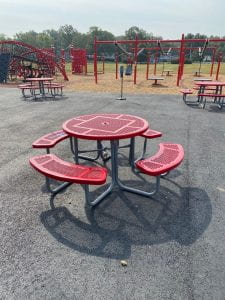“Going through things you never thought you’d go through will only take you places you never thought you’d get to.” – Morgan Harper Nichols
We are wrapping up our second week of hybrid instruction and most of our students have had the opportunity to return to in-person learning. Prior to September 14, our students had not experienced in-person learning for 185 days. Reacquainting children with their teachers (and each other) in an educational setting has been the aim of our community for several months. Our new model of schooling was designed collectively by a task force of parents, teachers, students, and staff. I am uncertain as to how long we will use this hybrid model of schooling, but am hopeful that it is only temporary until we, as a nation, are better able to deal with the COVID-19 pandemic. Beyond this, I believe that there are some practices and strategies that we have learned that will shape how we educate our children in the post-COVID world. Here are some “silver linings” that I have seen as a result of our teachers’ and students’ responses to the coronavirus:
- Use of learning spaces: At SOCSD, we are exploring ways to use indoor and outdoor spaces differently. While this is mostly a requirement of social distancing mandates from NYSED and the Department of Health, it has forced us to reimagine how we can array teachers and students differently. The current practice of multiple groups of students, at multiple locations, learning content simultaneously from a single teacher is an innovation that we have developed at SOCSD. We also have a greater appreciation for daily physical activity and outdoor learning experiences.
- The pandemic has fostered our Growth Mindset which leads to our desire to learn and a tendency to embrace challenges, persist in the face of setbacks, see effort as the path to mastery, learn from criticism, and find lessons and inspiration in the success of others (Dweck, 2013).
- Awareness of others and ourselves: In an effort to avoid prolonged isolation, we have pursued a course of action that has allowed our children to re-emerge from their homes and to become social again. Being social in a physical space is different than being social in a virtual space. In a hybrid model, we have learned that there are benefits from understanding how to engage with each other both online and in-person. Sometimes the best solution is a face-to-face meeting, while other solutions are better dealt with remotely. According to SOMS Prevention Counselor Bobbie-Angela Wong, “The Counseling Office can now use Google Classroom to ensure that students have access to counseling staff during difficult times.” Ms. Wong further states that there is unfortunately still a stigma around mental health which makes it difficult to ask for help. “This Google Classroom allows students to make appointments, check in, and reach out without feeling embarrassed, ashamed, or nervous since they can do it privately…the end goal is that all students can feel comfortable talking about their emotions and reaching out. The Google Classroom is a starting point to break down barriers and end the stigma!”


